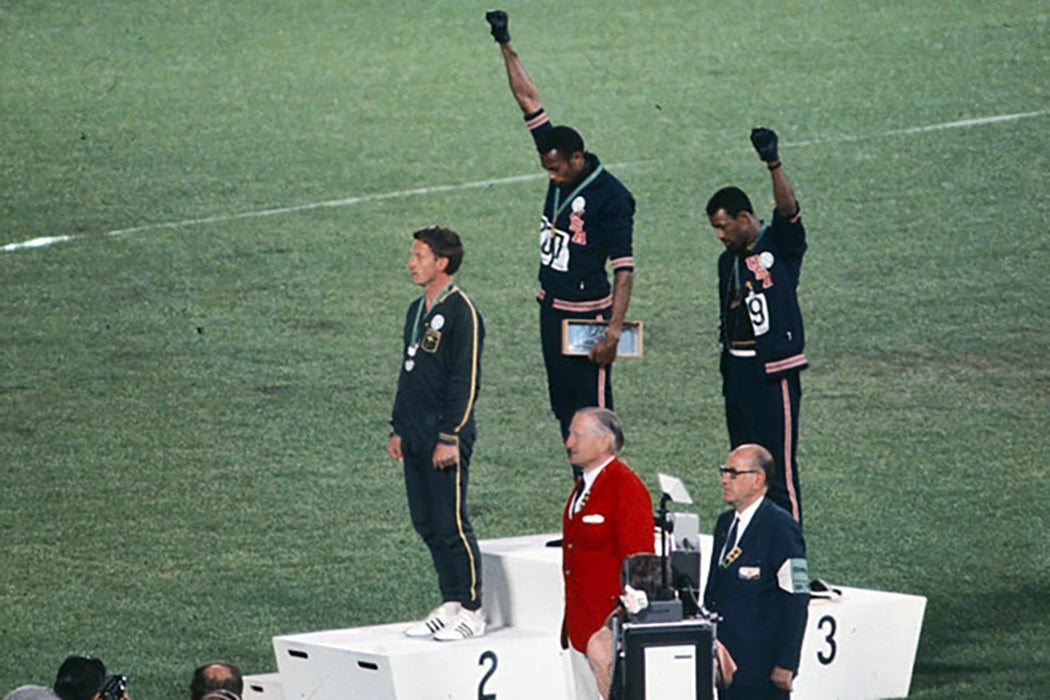Controversies over today’s “take a knee” protests of police violence against African Americans call to mind the rocky process of integrating sports in the first place. “Money and competition were the two major factors that drove the complete integration of teams,” writes Renford Reese, noting that white college and university administrators, athletic directors, and coaches led the effort in the 1960s after the long period of segregated sports that begin in the 1890s.
Initially, Reese notes, sports teams presented “ideal Negro” paragons to belie racist stereotypes. The boxer Joe Louis was the model: he was “polite, well-mannered, and knew his place,” winning favor by not dating white women. By the 1970s, however, the era of tokenism in sports was over: organizations had to adapt to the new reality of competition or simply lose. The Southeastern Conference (SEC) was the last bastion of Jim Crow college football, with the University of Mississippi the last SEC school to integrate its team in 1971. This led to the paradoxical situation in which “people with bitter racial opinions about blacks in general would display great enthusiasm over black athletes on their favorite teams.”
Donald Spivey also delves into this history. Before World War II, those few blacks on otherwise all-white teams in the north led a “dual existence,” as figures simultaneously loved and hated, or “cheered on Saturday and despised the other six days a week.” Even after manpower shortages during the war opened new doors to black athletes, “all suffered racial abuse and discrimination at the hands of opponents, teammates, fans, coaches, the student body, and the wider establishment of sports writers and bowl committees.”
Spivey details a 1940 New York University protest that isn’t nearly as well known as later sit-down strikes. NYU’s football team was scheduled to play the University of Missouri, which maintained a strict color line over interracial play. NYU sidelined its star black player as a result–he wasn’t even allowed to travel with the team to the game–and expelled seven protest leaders. The protest, which lasted into 1941, “served notice to intercollegiate sports world that this form of discrimination would no longer be tolerated.”
“Protest,” Spivey writes, “is synonymous with the experience of black people in the United States from slavery to the present.” But black athletes, Reese says, have in general been quite cautious, “socialized to be unpolitical” and bound by scholarships and endorsements.
Reese notes that the late 1960s to early 1970s activism by amateur and professional athletes reached a peak: “at no other time in American sports history have black athletes publicly identified with the struggle and outwardly challenged the system.” This was the era of the clenched-fist “Black Power” salute at the 1968 Olympics in Mexico City by Tommie Smith and John Carlos, the gold and bronze medal winners in the 200-meter race.
Smith and Carlos were expelled from the Games and excoriated in the media (silver-medalist Peter Norman, who supported Smith and Carlos, was also much criticized in his native Australia). As Reese and Spivey demonstrate, it seems that some will tolerate athletes (and entertainers, and, indeed, their fellow citizens) only if they play the game and keep quiet.







